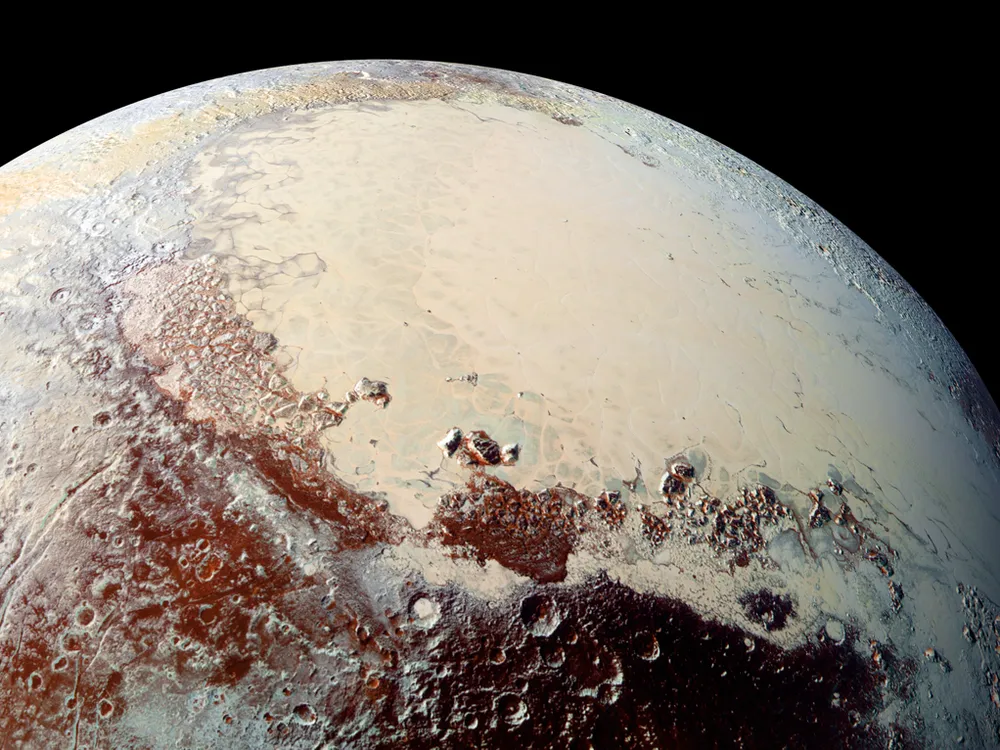Ice volcanoes, also known as cryovolcanoes, are extraordinary formations that erupt with frozen substances, in contrast to the molten rock of conventional volcanoes.

Scientists have discovered a massive ice volcano on Pluto, which was once thought to be a crater. This is a revolutionary finding. This recently discovered geological marvel, known as Kiladze Caldera, is thought to have erupted several times over its history, releasing enormous amounts of ice, water, and gasses.
Ice volcanoes, also known as cryovolcanoes, are extraordinary formations that erupt with frozen substances, in contrast to the molten rock of conventional volcanoes. They have been observed on various celestial bodies in our solar system, including Ceres and Saturn’s moon Enceladus.
Alongside Kiladze Caldera, researchers have documented two other cryovolcanic structures named Wright Mons and Piccard Mons on Pluto. This revelation of multiple ice volcanoes suggests their significant role in the dynamic geological processes taking place on the distant dwarf planet.
What sets Kiladze Caldera apart is its proximity to water ice, a substance typically concealed beneath layers of methane snow and debris on Pluto’s surface. Furthermore, the presence of ammonia mixed with the water ice offers a potential explanation for the occurrence of liquid cryo-lava. Ammonia, known for its ability to lower the freezing point of water, could facilitate the flow of liquid on Pluto’s icy terrain.
Of particular interest is Kiladze’s relative youth. The volcano is encircled by water ice that has not yet been covered by other materials, indicating its recent geological formation. Scientists estimate that Kiladze and its surroundings are only a few million years old on geological time scales. This characteristic prompts further inquiries into the volcano’s origin and longevity.
The source of the water cryo-lava remains an enigma, prompting scientists to continue their investigations. One theory suggests that Pluto may have once harbored a global internal ocean, sustained by residual heat from its formation. This internal ocean, potentially combined with freeze-resistant substances like ammonia, may have periodically erupted through cryovolcanic activity.
The revelation of Kiladze Caldera on Pluto not only deepens our comprehension of this distant celestial body but also raises captivating questions about the presence and viability of liquid water, a crucial precursor for life.
As exploration advances, the enigmatic nature of this ice volcano beckons the next generation of planetary scientists, offering them the opportunity to unlock the secrets of Pluto’s tumultuous history and heralding an exciting era of exploration and revelation.